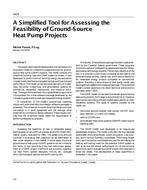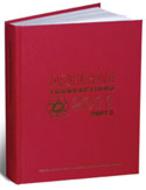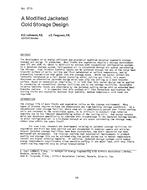Click here to purchase
This paper introduces an algebraic-type heat stress index called ETV and how it can be used to estimate the duration limit of exposure (DLE) under different indoor environmental and personal conditions. ETV was originally developed from the human body heat balance equation and then revised according to simulation results with the predicted heat strain (PHS) model. ETV is unique in that it uses the air specific enthalpy, not the wet-bulb temperature, to measure the latent heat transfer from the skin to surrounding environment. The new criterion is proposed for evaluating the maximum ETV value at which people can work continually for 240 min at a given air speed. Research showed that the DLE dropped quickly from 240 min to 120 min when the ETV value was even slightly greater than the corresponding . Therefore, all estimated DLE values between 120–240 min need to be applied with great caution. All workers are strongly recommended to take a break at least every 2 h in severely hot environments. A tradeoff was established between the metabolic rate or clothing insulation and the operating temperature in heat stress applications. This tradeoff method was used to develop a complete procedure for predicting the DLE under more general thermal and behavior conditions, and the difference between the PHS model and present method was analyzed and quantified.
Citation: 2020 Winter Conference, Orlando, FL Conference Papers
Product Details
- Published:
- 2020
- Number of Pages:
- 9
- Units of Measure:
- Dual
- File Size:
- 1 file , 1.2 MB
- Product Code(s):
- D-OR-20-C010


